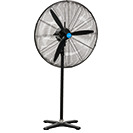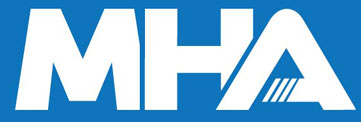How to Ensure Workplace Safety When Using Lifting Equipment
Date Posted:10 January 2025
With the right precautions, lifting equipment can be a powerful tool for improving productivity and ensuring that tasks are completed safely and efficiently.
Lifting equipment is essential in various industries, from construction sites to warehouses and factories. These machines make heavy lifting more efficient, safer, and less physically demanding. However, when improperly used or maintained, lifting equipment can pose serious risks to workers, including injuries, accidents, and even fatalities. Ensuring workplace safety when using lifting equipment is crucial, not only for compliance with workplace health and safety regulations but also for the well-being of your team and the productivity of your operations.
In this blog, we will explore key strategies and best practices to ensure workplace safety when using lifting equipment.
1. Proper Training for Operators
One of the most important steps in ensuring workplace safety when using lifting equipment is providing proper training for operators. Lifting equipment, whether cranes, forklifts, hoists, or lifting trolleys, requires skilled handling to operate safely.
Training Programs: Operators should undergo comprehensive training that covers the following aspects:
• Equipment Familiarisation: Operators must be familiar with the specific equipment they will be using, including its components, functions, and limitations.
• Safe Operating Procedures: Training should include how to safely load and unload materials, lift and lower loads correctly, and avoid overloading the equipment.
• Emergency Protocols: Operators should be trained on how to respond in the event of a malfunction or emergency, such as a load falling or the equipment tipping over.
• Maintenance Awareness: Operators should also be made aware of the importance of regular inspections and maintenance of lifting equipment.
By ensuring that your team is well-trained, you reduce the risk of accidents caused by operator error, which is one of the leading causes of lifting equipment-related injuries.
2. Regular Maintenance and Inspections
Regular maintenance and inspections are essential to keeping lifting equipment in safe working order. Over time, lifting equipment is subject to wear and tear, and parts can become damaged or malfunction. Regular checks help identify issues before they result in failures that could jeopardise safety.
Inspection Checklist: Before each use, operators should conduct a pre-use inspection of the equipment, looking for issues such as:
• Damaged or Worn Components: Check for frayed cables, cracks in the frame, or worn-out hydraulic hoses.
• Fluid Levels: Ensure that the hydraulic fluid, oil, and other necessary fluids are at the correct levels.
• Brakes and Safety Features: Test the brakes and ensure that safety features, such as load limits, are working correctly.
In addition to daily checks, lifting equipment should undergo thorough inspections at regular intervals, as per the manufacturer’s guidelines and industry regulations. For example, cranes may require annual or bi-annual inspections by a qualified professional to ensure that they meet safety standards.
Preventive Maintenance: Scheduled preventive maintenance helps avoid unexpected breakdowns and prolongs the lifespan of the equipment. It is important to keep records of maintenance schedules, inspections, and any repairs carried out to ensure that the equipment is always in good condition.
3. Load Limits and Proper Lifting Practices
Overloading lifting equipment is one of the most common causes of accidents. Each piece of lifting equipment has a specified load capacity, which should never be exceeded. Exceeding the load limit can cause the equipment to tip over, the lifting mechanism to fail, or the load to drop.
Adhering to Load Limits: Ensure that the load capacity of the equipment is clearly marked and visible to operators. It is critical to:
• Read Load Charts: Operators should always refer to the load chart provided by the manufacturer to determine the maximum weight that can be safely lifted.
• Distribute Loads Evenly: When lifting, ensure that the load is evenly distributed and properly secured to prevent shifts during transport.
Safe Lifting Practices: In addition to following load limits, safe lifting practices must be adhered to:
• Clear the Area: Before lifting a load, ensure that the area is clear of obstacles and personnel. A safe work zone should be established to prevent others from entering the area while the load is in motion.
• Lift Slowly and Steadily: Avoid jerky movements or sudden accelerations when lifting loads. This helps prevent damage to the equipment and ensures a controlled lift.
• Maintain Proper Posture: Operators should use proper body mechanics and avoid straining themselves when working with lifting equipment, particularly when manually securing the load.
4. Using Personal Protective Equipment (PPE)
While lifting equipment is designed to minimise the physical strain on workers, it is still essential to wear the appropriate personal protective equipment (PPE) to reduce the risk of injury in case of an accident.
Types of PPE:
• Hard Hats: To protect against falling objects or accidental bumps.
• High-Visibility Clothing: This ensures that operators and workers on the ground are visible to each other, reducing the risk of accidents.
• Safety Footwear: Steel-toed boots or shoes with slip-resistant soles help protect feet in case of heavy items falling or equipment malfunctions.
• Gloves: Protective gloves prevent injuries while handling materials, and ensure a better grip on the load.
PPE should be worn by all personnel in areas where lifting equipment is in use, not just the operators. Safety procedures and PPE usage must be part of the workplace safety culture, ensuring everyone is protected.
5. Clear Signage and Communication
Clear communication is essential for safety when using lifting equipment. Whether the operator is working alone or with a team, everyone involved must be on the same page to ensure safe operations.
Signage: Proper signage should be placed around lifting equipment to warn of potential hazards, including:
• Load Limits: Mark clear signs indicating the maximum load capacity of lifting equipment.
• Warning Signs: Use warning signs to alert workers to moving equipment or overhead hazards.
• Emergency Stops: Ensure that emergency stop buttons are clearly marked and easily accessible.
Communication Protocols: For operations involving multiple workers, such as a crane with a ground crew, effective communication is key. Use radios, hand signals, or other communication devices to ensure everyone is aware of what is happening at all times. A clear communication protocol should be in place, and operators should ensure that all team members understand the signals used.
Designated Spotters: When operating equipment such as cranes, forklifts, or trolleys, having a spotter can significantly improve safety. Spotters can assist in guiding the operator, ensuring that lifts are conducted smoothly and without obstacles in the path. They can also help communicate any hazards the operator may not be able to see.
6. Adherence to Safety Standards and Regulations
In Australia, workplaces are subject to strict health and safety regulations, including those that govern the use of lifting equipment. These regulations are designed to ensure that equipment is used safely and that the workplace remains free from hazards.
Work Health and Safety (WHS) Guidelines: Lifting equipment must comply with Work Health and Safety (WHS) guidelines, which cover the design, maintenance, and use of lifting equipment. Regular safety audits, risk assessments, and compliance checks should be conducted to ensure that the equipment and operating procedures meet the required safety standards.
Risk Assessments: Before using lifting equipment, conduct a risk assessment to identify potential hazards and put preventive measures in place. This should include assessing the condition of the equipment, the type of load being lifted, and the surrounding environment.
Ensuring workplace safety when using lifting equipment requires a multifaceted approach, including proper training, regular maintenance, adherence to load limits, use of personal protective equipment (PPE), clear communication, and strict compliance with safety regulations. By prioritising these safety measures, you can significantly reduce the risks associated with lifting operations, protect your workers, and enhance the efficiency of your workplace. Learn more about the Importance of Workplace Safety and How To Implement It in our other blog.
Ultimately, a commitment to safety not only helps prevent accidents and injuries but also fosters a culture of responsibility, where everyone—from operators to managers—is invested in maintaining a safe working environment. With the right precautions, lifting equipment can be a powerful tool for improving productivity and ensuring that tasks are completed safely and efficiently.
































































































































 Trolleys & Hand Trucks
Trolleys & Hand Trucks Cage Trolleys
Cage Trolleys Cleaning Carts & Trolleys
Cleaning Carts & Trolleys Construction Trolleys
Construction Trolleys Custom Trolleys
Custom Trolleys Hand Trucks & Dollies
Hand Trucks & Dollies Laundry/Linen Trolleys
Laundry/Linen Trolleys Lifting Trolleys
Lifting Trolleys Order Picking Trolleys
Order Picking Trolleys Panel Cart Trolleys
Panel Cart Trolleys Platform Trolleys
Platform Trolleys Powered Trolleys
Powered Trolleys Shelf & Tiered Trolleys
Shelf & Tiered Trolleys Shopping Trolleys
Shopping Trolleys Stainless Steel Trolleys
Stainless Steel Trolleys Tool Trolleys
Tool Trolleys Utility & Service Carts
Utility & Service Carts Lifting & Handling Equipment
Lifting & Handling Equipment Forklift Attachments
Forklift Attachments Jib Attachments
Jib Attachments Lifting Hoists & Pallet Hooks
Lifting Hoists & Pallet Hooks Load Skates & Tow Tugs
Load Skates & Tow Tugs Manual Stackers & Lifters
Manual Stackers & Lifters Pallet Jacks
Pallet Jacks Pallet Lifters
Pallet Lifters Pallet Rotators & Dispenser
Pallet Rotators & Dispenser Powered Pallet Trucks & Electric Lifters
Powered Pallet Trucks & Electric Lifters Scissor Lift Trolleys and Tables
Scissor Lift Trolleys and Tables Conveyor Equipment
Conveyor Equipment Conveyor Frames & Stands
Conveyor Frames & Stands Roller & Skate Conveyors
Roller & Skate Conveyors Ladders & Access Equipment
Ladders & Access Equipment Container & Yard Ramps
Container & Yard Ramps Ladders & Step Stools
Ladders & Step Stools Work Platforms & Crane Cages
Work Platforms & Crane Cages Drum Handling Equipment
Drum Handling Equipment Drum Storage & Bunding
Drum Storage & Bunding Drum Trolleys & Lifters
Drum Trolleys & Lifters Forklift Drum Handling
Forklift Drum Handling Waste Handling & Bins
Waste Handling & Bins Bin Lifters & Tippers
Bin Lifters & Tippers Plastic Waste & Wheelie Bins
Plastic Waste & Wheelie Bins Steel Waste & Tipping Bins
Steel Waste & Tipping Bins Waste Carts
Waste Carts Dangerous Goods Storage & Spillage
Dangerous Goods Storage & Spillage Aerosol Cans Storage Cages
Aerosol Cans Storage Cages Bunded Pallets & Storage
Bunded Pallets & Storage Corrosive Goods Storage Cabinets
Corrosive Goods Storage Cabinets DG Storage & Trolleys
DG Storage & Trolleys Flammable Liquid Cabinets
Flammable Liquid Cabinets Forklift Gas Storage Cages
Forklift Gas Storage Cages Site Storage
Site Storage Spill Kits
Spill Kits Shelving & Storage Equipment
Shelving & Storage Equipment Stillage & Transport Cages
Stillage & Transport Cages 750 Series Cage Configurations
750 Series Cage Configurations Heavy Duty Cabinets
Heavy Duty Cabinets Heavy Duty Shelving
Heavy Duty Shelving Mega Bins & Pallets
Mega Bins & Pallets Packing & Workbenches
Packing & Workbenches Parts Trays & Stor-Pak Bins
Parts Trays & Stor-Pak Bins Pegboard & Louvre Panels
Pegboard & Louvre Panels Plastic Bins & Crates
Plastic Bins & Crates Plastic Handling Solutions Bins
Plastic Handling Solutions Bins Plastic Pallets
Plastic Pallets Stack & Nest Bins
Stack & Nest Bins Pallet Racking Accessories
Pallet Racking Accessories Workplace Equipment
Workplace Equipment Modular Workbenches
Modular Workbenches Electric Height-Adjustable Workbenches
Electric Height-Adjustable Workbenches Floor Matting
Floor Matting General Workplace Equipment
General Workplace Equipment Industrial Weighing Scales
Industrial Weighing Scales Packaging Machinery
Packaging Machinery Stationery Cupboards
Stationery Cupboards Storage and Stillage Cages
Storage and Stillage Cages Tool Trolleys
Tool Trolleys Tooling Cabinets
Tooling Cabinets Workshop Fans and Coolers
Workshop Fans and Coolers Safety Barriers, PPE & Signage
Safety Barriers, PPE & Signage Barriers & Bollards
Barriers & Bollards First Aid Equipment
First Aid Equipment Gloves, Knives and PPE
Gloves, Knives and PPE Signage
Signage Cleaning & Site Supplies
Cleaning & Site Supplies Cleaning Equipment
Cleaning Equipment Cleaning Trolleys
Cleaning Trolleys Rubbish Bins
Rubbish Bins Signs & Traffic Supplies
Signs & Traffic Supplies Construction Equipment
Construction Equipment Construction Trolleys
Construction Trolleys Waste Handling
Waste Handling General Site Equipment
General Site Equipment Concrete Equipment
Concrete Equipment Site Storage
Site Storage Lifting Equipment
Lifting Equipment Verdex Specials
Verdex Specials









